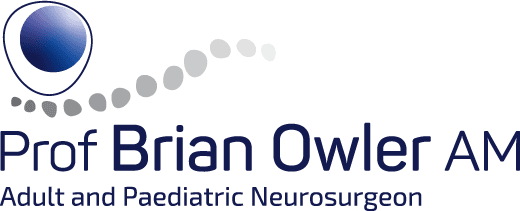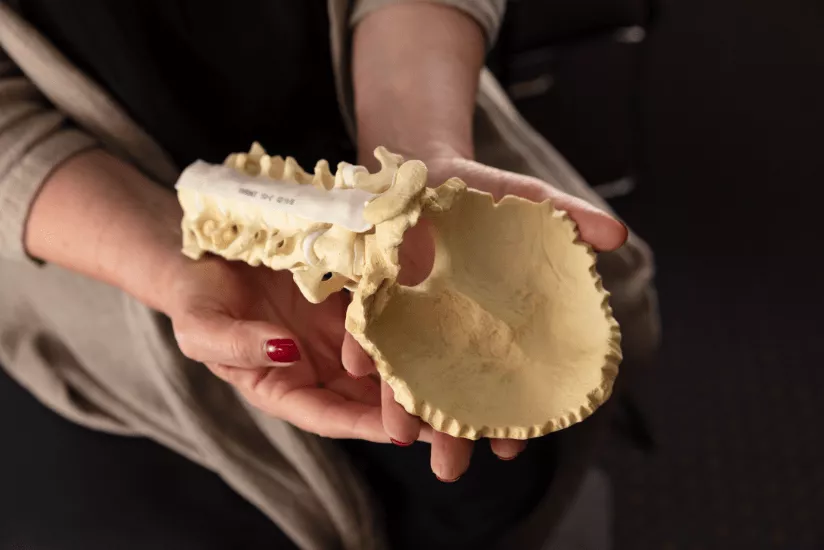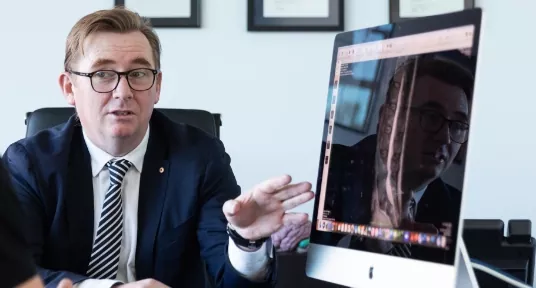


Pain is the most common symptom of radiculopathy and, in most cases, is the first symptom to improve; often immediately after the surgery. Pins and needles may take longer but tend to improve quickly. Numbness takes the longest period to recover, perhaps even over 12 months and some patients may not experience full recovery of numbness. Weakness has variable recovery depending on severity and duration before surgery. Some patients will experience recovery immediately while others may have persistent weakness despite the surgery. Normally, physiotherapy is required to treat weakness. Overall, about 90% of patients will experience significant improvement in pre-operative symptoms, while a further 10% will not improve as much as is hoped, and 1-2% percentage will be worse off in relation pain or some other problem. No guarantees can be given in relation to the surgery.
Fusion of one level of the cervical spine may result in some limitation of movement. When only one level of the spine is fused, the reduction in functional movement of the cervical spine is normally small and only noticeable at extremes of motion such as when trying to turn around to look over the shoulder when driving. When two or more levels are fused, the limitation of movement increases, and people who undergo fusions at multiple levels will notice more stiffness. However, they are still able to turn their head and bend their neck to a significant degree in most cases.
All surgery caries risk. There are risks common to all surgeries such as infection, bleeding, deep vein thrombosis (DVT), pulmonary embolism and those associated with a general anaesthetic.
Risks specific to this operation are those related to the approach, surgery around the spinal cord and the fusion.
The main approach related risks are a small risk to the recurrent laryngeal nerve and oesophageal perforation. The recurrent laryngeal nerve is a nerve supplying the muscles for the vocal cord. Injury results in a very hoarse voice that may be permanent. Oesophageal perforation is rare and means a hole is inadvertently made in the muscular pipe that carries food to the stomach. This can result in a severe life-threatening infection.
Surgery around the spinal cord and nerve roots carries a small risk of neurological injury that may be temporary or permanent. This could range from at the worst, quadriplegia (inability to move the arms and legs), paraplegia, or weakness/ numbness involving part of an arm or leg.
In relation to the fusion itself, there is a risk of the bones not healing together as one, i.e., non-union / failure of fusion. This may result in neck pain and revision surgery. There is a risk of adjacent segment disease. As the spine is fused at the level(s) of the pathology, more stress is placed across the levels above and below the level of the fusion. This may accelerate changes at those levels and cause similar problems, sometimes requiring surgery.
This is not an exhaustive list of potential complications but this information provides an overview of the more common complications that patients may be exposed to.
The hospital stay is normally around 2-4 days in total, but varies depending on the patient and their underlying condition. The day after the surgery the wound drain is removed and plain x-rays of the neck are obtained. During the hospital stay the patient receives daily physiotherapy. Patients will receive prophylactic subcutaneous heparin injections and are required to wear stockings to prevent DVTs.
After surgery, there is normally some discomfort and analgesia is provided. However, the amount of analgesia is required is usually small. Constipation is a common complaint after surgery and is usually due to analgesics. Patients should inform staff if this becomes an issue.
The wound is normally cleaned and the dressing changed each day. After discharge no dressing is required. You may shower and then pat the wound dry with a clean towel afterwards. While the wound may get wet, do not soak it in the bath or in a pool for at least 2 weeks after the surgery. Do not rub the wound. If there are any concerns such as excessive redness, pain or ooze then you should have your GP review the wound as the first step.
After discharge, it is advisable to rest for 2 weeks which should consist of normal daily activities. One should not sit in the one position for too long such as at a computer for more than 20 minutes at a time. Once you feel more confident then activities such as driving can resume. Normally one can drive after 2-4 weeks from the date of surgery. A return to work depends on the work environment. Those with sedentary jobs can usually begin to go back to work after 2 weeks. Those with more physical jobs should wait at least 6 weeks but it should be discussed with Prof Owler.
A post-operative appointment is normally arranged at 6 weeks post-surgery. The appointment is normally provided to the patient at the time of discharge from hospital.
At that visit any concerns can be discussed and the wound will be checked. A follow-up x ray is normally performed at 3 months after the surgery which should be delivered to Prof Owler’s office for review.
There are few long-term restrictions after this surgery. Patients who undergo an ACDF are usually advised to avoid body contact sports such as rugby league and union as well as to avoid any activities where there may be undue strain on the neck.
For the first 2 weeks patients should not lift any significant weights. This can gradually be increased by 5 Kg every 2 weeks. By the post-operative visit at the 6 week point after surgery, patients should have been lifting < 10Kg. After this the limit, can be increased. There is a general lifting limit of 20Kg for most people but this may need to be varied depending on the patient’s occupation.
